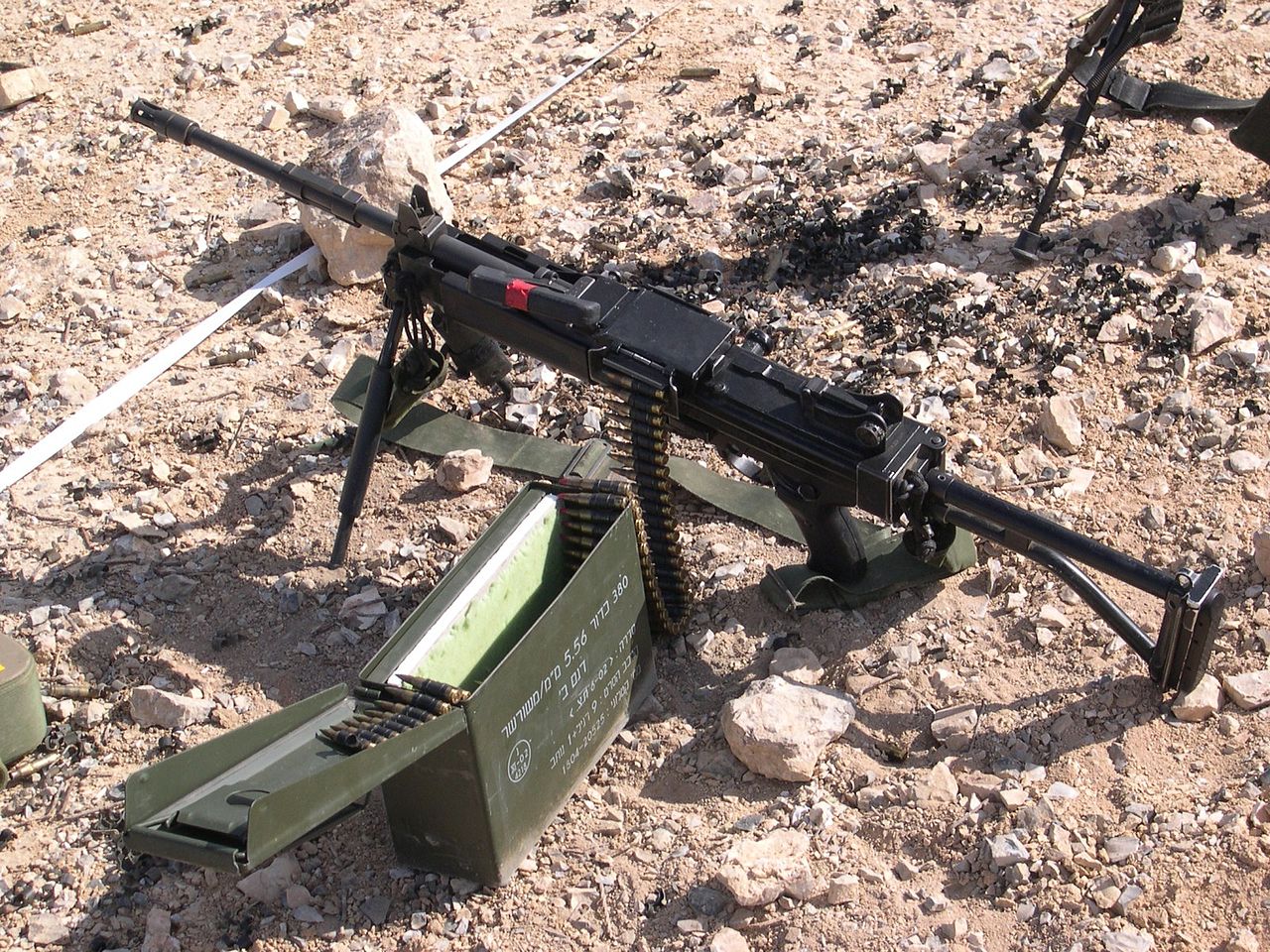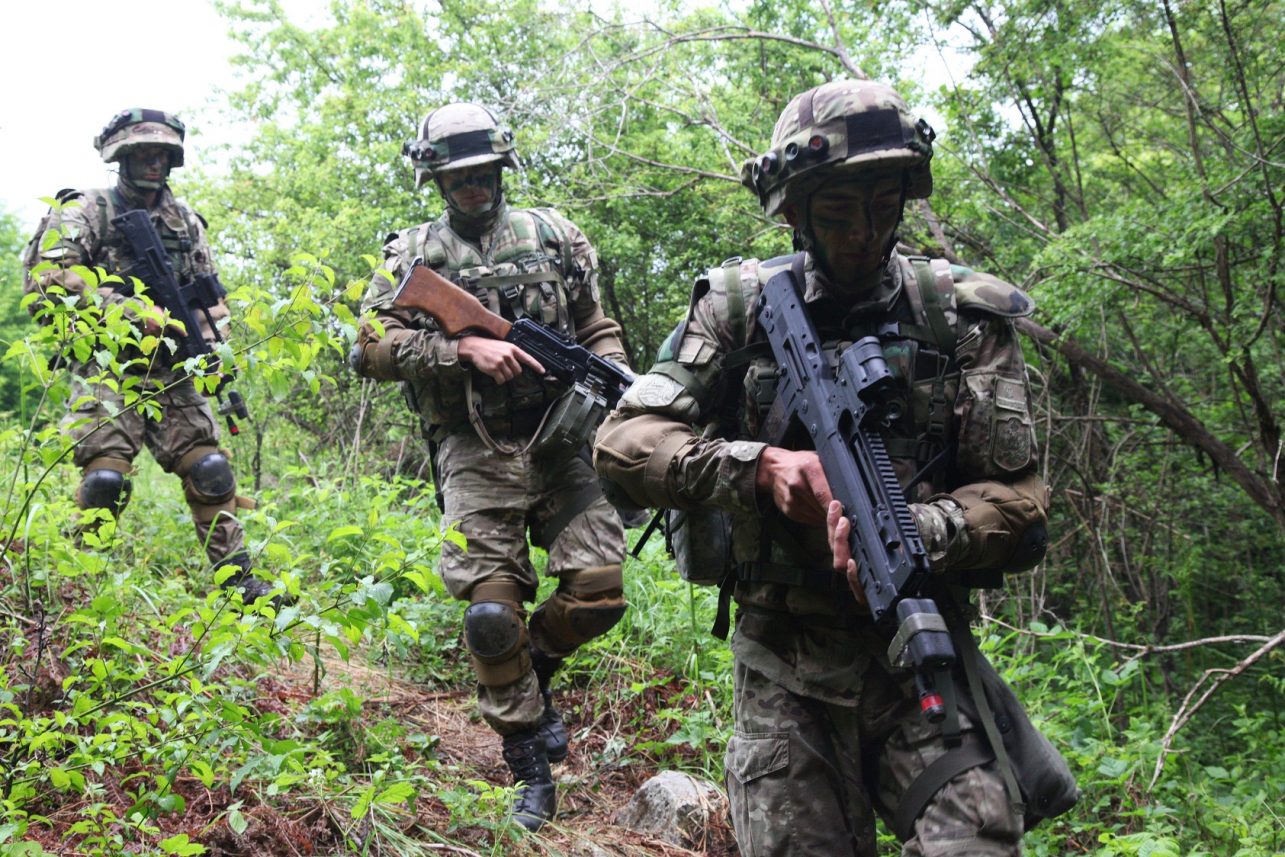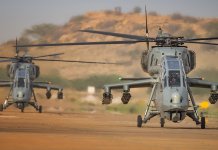As India faces the threat of a two-front war, the need to bolster the small arms firepower of the military has become imperative. India’s infantry units, the first line of defense at the borders, continue to use archaic rifles.
The Indian Army had been looking to replace these guns with state-of-the-art assault rifles, for which several deals were inked in the last two years. One of the major defense partners to supply machine guns to India has been Israel.
Israel and India have made significant progress in developing their domestic military arms sector and India remains a major buyer of Israeli small arms. India and Israel Weapon Industries (IWI) secured a $118 million contract in March 2020 for approximately 16,000 Negev NG-7 machine guns. Last year, a supply of 6,000 general-purpose machine guns was dispatched, stated National Interest.

IWI remains committed to supplying all NG-7s to the Indian Army within two years, implying that the remaining 10,000 will be in service by the middle of 2022. New Delhi has also expressed interest in acquiring more NG-7s, according to a report by Israel Defense.
The Indian Army’s infantry units deployed along the Line of Actual Control (LAC) and the Line of Control (LOC) have reportedly been supplied with the NG-7 guns. While the LAC denotes the disputed border between India and China, the LoC is the de facto border between India and Pakistan in the Kashmir region.
??INDIAN ARMY ZINDABAD??
Armed with Negev Light Machine Guns, Tavor-21 & AK-47 assault rifles, Garud Special Forces operatives have been deployed in forward locations along the Line of Actual Control in Eastern #Ladakh
Thanks @narendramodi Ji @rajnathsingh Ji & team #ModiSarkar pic.twitter.com/8YNugVIjpc
— Jamyang Tsering Namgyal (@jtnladakh) August 9, 2021
Last year, Jamyang Tsering Namgyal, Member of Parliament from Ladakh, tweeted a photograph of the Indian Air Force’s Garud commandos. “Armed with Negev Light Machine Guns, Tavor-21 & AK-47 assault rifles, Garud Special Forces operatives have been deployed in forward locations along the Line of Actual Control in Eastern Ladakh,” he wrote on Twitter.
In March 2019, the Defence Ministry had approved the long-awaited request for a contemporary, state-of-the-art Light Machine Gun (LMG) for the armed forces. The MoD inked a capital acquisition contract with Israel Weapons Industries for 16,479 LMGs at a cost of Rs 880 crores, as previously reported by India Today.
The Negev Light Machine Gun
The Negev is an Israeli light machine gun created by Israel Weapon Industries (previously known as Israel Military Industries) to replace the Galil LMG, which suffered from barrel overheat during sustained fire. It uses universal NATO ammunition.
The NG-7 is a modernized version of the Negev NG-5, a light machine gun with a 5.56x45mm NATO caliber. The NG-7 has a 20-inch barrel and uses the larger and more powerful 7.62x51mm NATO cartridge.

A short-stroke gas piston operating system and a rotary bolt locking mechanism are used in the gas-operated, select-fire machine gun. A 100 or 125-round assault drum magazine feeds the weapon.
The NG-7 fires at a standard rate of 600 to 750 rounds per minute (RPM), with a second setting for “severe situations” that raises the rate to 1,000 RPM. The effective range is around 1 km. A Picatinny sight rail on top of the receiver and a fully adjustable folding stock are part of the machine gun’s modernized body.
New NEGEV NG7 Light Machine Guns of the Indian Army chambered in 7.62×51mm being delivered to the troops.
Deal for 16,479 guns signed in March 2020 & first batch of 6,000 guns delivered to Northern Command in early 2021.
⬇️During training & familiarisation session for troops. pic.twitter.com/W8HuwSG80J
— Jay Wankhade (@jaywankhadejrw) January 18, 2022
It’s unknown if the IWI eLog weapon-embedded sensor module is included in the NG-7s provided to the Indian military. The module was incorporated to collect data on the weapon’s use so that maintenance and repair could be done more efficiently, according to National Interest.
Russian & American Guns
In December 2021, India and Russia struck a deal to manufacture AK-203 assault rifles in the country during Russian President Vladimir Putin’s visit to New Delhi and the inaugural India-Russia 2+2 dialogue.
As part of the Rs 5,124-crore deal, an Indo-Russian joint venture will produce 500,000 AK-203 assault rifles in Uttar Pradesh, India. The 7.62 X 39mm caliber AK-203 rifle has a range of over 500 meters and a rate of fire of 600 RPM.
It is shorter in length and lighter in weight than the 5.56mm INSAS (Indian Small Arms System) rifles, which it will replace. These rifles, of which an initial 70,000 would be bought from Russia, are expected to be inducted into the Indian Armed Forces sometime in the second half of 2024.

While there is still some time before the Indian Army could finally be armed with the Russian assault rifles, the service decided to arm all of its infantry battalions with the American Sig Sauer last year when the AK-203 deal hadn’t been signed, as previously reported by The Print.
This is indicative of the Indian Army’s alacrity and commitment towards arming its infantry with the best modern small arms to bolster their firepower.
Sig 716s were to be issued to at least two companies (about 100 soldiers) in each infantry battalion, regardless of whether they were in the field or at peace posts, according to the plan.
In December 2019, the Indian Army received the first delivery of 72,000 SiG 716 G2 Patrol assault/battlefield rifles to bolster border patrolling along the Line of Control with Pakistan. It received the second shipment of 72,000 firearms in 2021.
Further, the Sig Sauers were modified to suit the Indian standards, as previously stated by The Federal. The Indian Army integrated existing sight systems on these rifles as it does not have an optical device, which restricted its use in the dark. Since the bullets used in these rifles were a little expensive, the Indian Army used the local made rounds of the 7.62 light machine gun (LMG) to ration the cost of operations.
The infantry soldiers welcomed the American rifles, which weighed only 3.82 kg without the magazine. The rifle has an effective kill range of 600 meters and is more accurate than the INSAS. The rifle becomes ambidextrous when corking is done from behind rather than from the side, as is the case with most small guns.
To reduce ordnance difficulties, the Sig 716s and Negev NG-7s are likely to be utilized in the same regiments. Both purchases were wise investments in the modernization and defense of India’s military, National Interest noted.
- Contact the author at sakshi.tiwari9555@gmail.com
- Follow EurAsian Times on Google News




